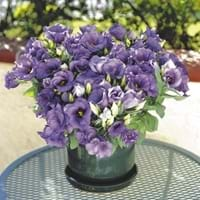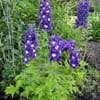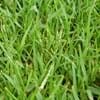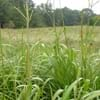Life Span
Biennial
Perennial
Type
Flowering Plants, Grass, Herbs
Flowering Plants, Shrubs
Origin
Southwestern United States, Mexico
Asia, North America, Southern Europe
Types
'Balboa White' lisianthus, 'Forever Blue' lisianthus, 'Forever White' lisianthus, 'Lisa Pink' lisianthus
Aristocrat, Buckeye Belle, Henry Bockstoce , Abalone Pearl, Coral Supreme, Cytherea, Charlie's White
Habitat
Grassland, Warmer regions
Hillside, Woods
USDA Hardiness Zone
8-11
3-9
Sunset Zone
1a, 1b, 2a, 2b, 3a, 3b, 4, 5, 6, 7, 8, 9, 10, 11, 12, 13, 14, 15, 16, 17, 18, 19, 20, 21, 22, 23, 24
A3, 1a, 1b, 2a, 2b, 3a, 3b, 4, 5, 6, 7, 8, 9, 10, 11, 12, 13, 14, 15, 16, 17, 18, 19, 20, 22
Habit
Upright/Erect
Clump-Forming
Minimum Height
Not Available
Minimum Width
Not Available
Flower Color
White, Blue, Pink, Lavender, Blue Violet
Pink, Red, White
Flower Color Modifier
Bicolor
Not Available
Fruit Color
Not Available
Not Available
Leaf Color in Spring
Gray Green
Dark Green
Leaf Color in Summer
Gray Green
Dark Green, Green
Leaf Color in Fall
Gray Green
Bronze, Dark Green, Green
Leaf Color in Winter
Gray Green
Not Available
Leaf Shape
Succulent
Compound
Plant Season
Spring, Summer
Spring
Sunlight
Full Sun, Partial Sun
Full Sun, Part sun
Type of Soil
Clay, Loam, Sand
Loamy
The pH of Soil
Neutral, Alkaline
Neutral
Soil Drainage
Well drained
Well drained
Bloom Time
Spring, Late Spring, Early Summer, Summer, Late Summer
Spring, Summer
Tolerances
Not Available
Not Available
Where to Plant?
Container, Ground, Pot
Ground, Pot
How to Plant?
Seedlings, Stem Planting
Grafting, Seedlings, Stem Planting, Transplanting
Plant Maintenance
Medium
Medium
Watering Requirements
Form a Soil ring to water efficiently, It cannot sustain wet-feet, Keep the ground moist but not water-logged, Use Mulches to help prevent water loss during hot and windy weather, Water twice a day in the initial period
Does not require lot of watering, It cannot sustain wet-feet, Keep the ground moist but not water-logged, Needs watering once a week, Prefer drip-irrigation instead of Over-head watering, Water occasionally
In Summer
Lots of watering
Lots of watering
In Spring
Moderate
Moderate
In Winter
Average Water
Average Water
Soil pH
Neutral, Alkaline
Neutral
Soil Type
Clay, Loam, Sand
Loamy
Soil Drainage Capacity
Well drained
Well drained
Sun Exposure
Full Sun, Partial Sun
Full Sun, Part sun
Pruning
Cut or pinch the stems, Prune ocassionally, Remove dead or diseased plant parts, Remove deadheads
Do not prune during shooting season, Prune to control growth, Remove dead or diseased plant parts, Remove deadheads
Fertilizers
All-Purpose Liquid Fertilizer
All-Purpose Liquid Fertilizer
Pests and Diseases
Botrytis Blight, Cercospora leaf spot, Cucumber mosaic, Curvularia blotch, Downy mildew, Fusarium stem rot, Fusarium wilt, Impatiens necrotic spot, Lisianthus necrosis, Phyllosticta leaf spot, Pythium root rot, Rhizoctonia stem rot, Sclerophoma stem blight, Tobacco mosaic
Botrytis Blight, Leaf spot, Stem spot, Viruses
Plant Tolerance
Drought
Drought
Flower Petal Number
Single, Double, Semi-Double
Semi-Double
Foliage Texture
Medium
Coarse
Foliage Sheen
Matte
Glossy
Attracts
Bees, Butterflies
Ants
Allergy
Chest tightness, Diarrhea, Dizziness, Nausea, Vomiting
Not Available
Aesthetic Uses
Beautification, Bouquets, Showy Purposes, Used for decorating walls, fences, gates, hedges, etc.
Beautification, Bouquets, Showy Purposes, Used for decorating walls, fences, gates, hedges, etc.
Beauty Benefits
Not Available
Not Available
Environmental Uses
Air purification
Air purification
Medicinal Uses
Not Available
Cough, Gout, Headache, Heartburn, Kidney problems, Upset stomach, Urinary tract problems
Part of Plant Used
Flowers
Flowers, Root, Seeds
Other Uses
Showy Purposes, Used for fragrance
Showy Purposes, Used as Ornamental plant, Used for fragrance
Used As Indoor Plant
Yes
No
Used As Outdoor Plant
Yes
Yes
Garden Design
Bedding Plant, Container, Cutflower, Mixed Border, Wildflower
Feature Plant, Foundation, Mixed Border
Botanical Name
EUSTOMA grandiflorum
Paeonia lactiflora
Common Name
Lisianthus, Florida blue,bBuebell
Herbaceous Peony
In Hindi
Lisianthus
Herbaceous peony
In German
Lisianthus
Krautige Pfingstrose
In French
Lisianthus
pivoines herbacées
In Spanish
Lisianthus
peonía herbáceas
In Greek
Lisianthus
ποώδη παιωνία
In Portuguese
Lisianthus
peônia herbáceas
In Polish
Eustoma
piwonii zielnych
In Latin
Lisianthus
herbaceum AGLAOPHOTIS
Phylum
Magnoliophyta
Magnoliophyta
Class
Magnoliopsida
Magnoliopsida
Order
Gentianales
Not Available
Family
Gentianaceae
Paeoniaceae
Clade
Angiosperms, Asterids, Eudicots
Angiosperms, Core eudicots, Eudicots
Tribe
Chironieae
Not Available
Subfamily
Not Available
Not Available
Season and Care of Florida Blue and Chinese Peony
Season and care of Florida Blue and Chinese Peony is important to know. While considering everything about Florida Blue and Chinese Peony Care, growing season is an essential factor. Florida Blue season is Spring and Summer and Chinese Peony season is Spring and Summer. The type of soil for Florida Blue is Clay, Loam, Sand and for Chinese Peony is Loamy while the PH of soil for Florida Blue is Neutral, Alkaline and for Chinese Peony is Neutral.
Florida Blue and Chinese Peony Physical Information
Florida Blue and Chinese Peony physical information is very important for comparison. Florida Blue height is Not Available and width Not Available whereas Chinese Peony height is 76.00 cm and width 76.00 cm. The color specification of Florida Blue and Chinese Peony are as follows:
Florida Blue flower color: White, Blue, Pink, Lavender and Blue Violet
Florida Blue leaf color: Gray Green
Chinese Peony flower color: Pink, Red and White
- Chinese Peony leaf color: Dark Green
Care of Florida Blue and Chinese Peony
Care of Florida Blue and Chinese Peony include pruning, fertilizers, watering etc. Florida Blue pruning is done Cut or pinch the stems, Prune ocassionally, Remove dead or diseased plant parts and Remove deadheads and Chinese Peony pruning is done Do not prune during shooting season, Prune to control growth, Remove dead or diseased plant parts and Remove deadheads. In summer Florida Blue needs Lots of watering and in winter, it needs Average Water. Whereas, in summer Chinese Peony needs Lots of watering and in winter, it needs Average Water.





